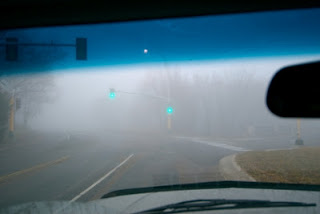Monthly Archives: March 2012

Teens Texting More Than Ever
March 19, 2012
A recently released study by the Pew Research Center’s Internet and American Life Project shows that teens are texting more than ever and, it seems, they prefer texting to phone conversations. The findings don’t bode well for motor vehicle safety groups who are trying to spread the word about the dangers of texting and driving. The greater portion of the increase in texting by teens falls in the age group of those just beginning to drive.
The study’ authors conducted phone interviews in both in English and in Spanish with a “nationally representative sample of 799 teens ages 12 to 17 years old and their parents living in the continental United States” in 2011. They found that texting is the “dominant daily mode of communication between teens and all those with whom they communicate.” Here is some of the information revealed in the study:
- “Overall, 77% of those ages 12-17 have a cell phone. The percentage of younger teens ages 12 and 13 with cell phones has declined slightly since 2009
- The frequency of teens’ phone chatter with friends – on cell phones and landlines – has fallen
- The typical American teen is sending and receiving a greater number of texts than in 2009. Overall, 75% of all teens text.
- The median number of texts (i.e. the midpoint user in our sample) sent on a typical day by teens 12-17 rose from 50 in 2009 to 60 in 2011.
- Much of this increase occurred among older teens ages 14-17, who went from a median of 60 texts a day to a median of 100 two years later. Boys of all ages also increased their texting volume from a median of 30 texts daily in 2009 to 50 texts in 2011. Black teens showed an increase of a median of 60 texts per day to 80.
- Older girls remain the most enthusiastic texters, with a median of 100 texts a day in 2011, compared with 50 for boys the same age.
- 63% of all teens say they exchange text messages every day with people in their lives. This far surpasses the frequency with which they pick other forms of daily communication, including phone calling by cell phone (39% do that with others every day), face-to-face socializing outside of school (35%), social network site messaging (29%), instant messaging (22%), talking on landlines (19%) and emailing (6%).
- The heaviest texters (those who exchange more than 100 texts a day) are much more likely than lighter texters to say that they talk on their cell phone daily. Some 69% of heavy texters talk daily on their cell phones, compared with 46% of medium texters (those exchanging 21-100 texts a day) and 43% of light texters (those exchanging 0-20 texts a day).
- Some 23% of all those ages 12-17 say they have a smartphone and ownership is highest among older teens: 31% of those ages 14-17 have a smartphone, compared with just 8% of youth ages 12-13. There are no differences in ownership of smartphones versus regular cell phones by race.”

Managing Speed: Tips for Teen Drivers
March 9, 2012
A 2009 analysis of speeding-related crashes by the National Highway Traffic Safety Administration (NHTSA) shows that following the speed limit is not enough to prevent a crash when conditions warrant a reduction in speed. The study showed that in speeding-related crashes that caused one or more injuries, 26% of the crashes were contributed to be exceeding the posted speed limit, while 74% were due to driving too fast for conditions. In property-damage-only crashes where speed was a contributing factor, 18% of the crashes were due to exceeding the posted speed limit and 82% of the crashes were contributed to by driving too fast for conditions.
Drivers should reduce their speed:
- immediately when it begins to rain and when driving through standing water. Roads become very slippery just after the rain begins, because the rainwater mixes with oil on the road that has been dropped from passing vehicles. Driving too fast on wet roads can result in skidding, when the vehicle loses traction with the road and the driver loses control of the vehicle. Never drive through standing water if you do not know how deep it is.
- in foggy or smoky conditions. Fog and smoke make it difficult to see ahead, and reducing speed reduces stopping distance.
- before a curve. Too often, drivers realize that they are moving too fast when they are already in the curve, but lowering speed in a curve results in a loss of traction that could cause a skid. Always reduce speed before entering the curve.
- in construction zones. Lower speed limits are usually posted in construction zones, but the new speed limit may not be low enough, especially for new drivers. The distraction of all the activity in the work zone and changes in the road surface can cause more difficulties for drivers who are inexperienced.
- around school zones and playgrounds. Children are often present when the lowered speed limits are not in effect. Children are unpredictable and may walk, skate or bike into the road without checking for traffic. Be extra careful around school zones!
- at night. Visibility is reduced at night; street lights and the vehicle’s headlights cannot entirely make up for this.
